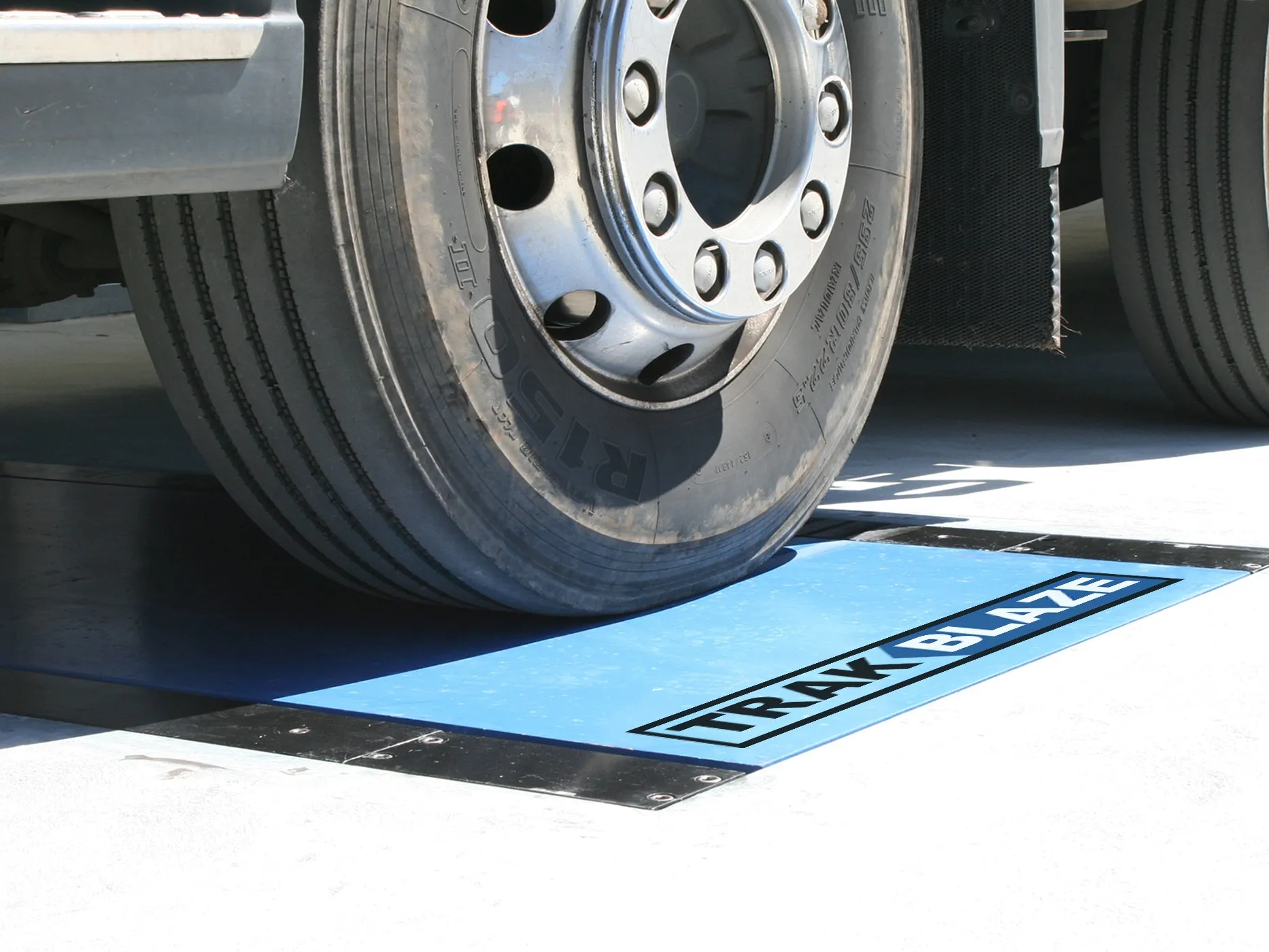At a glance
- Select a stable site with proper drainage, adequate traffic flow, and effective vibration control to minimise structural stress and prevent early degradation.
- Implement scheduled inspections, predictive diagnostics, and smart servicing to reduce downtime and extend component life.
- Enforce safe loading behaviours, speed limits, and alignment practices to minimise mechanical strain and preserve accuracy.
- Use sealed, corrosion-resistant materials, calibrate the system regularly, and train staff to operate it correctly in real-world conditions.
A truck weighbridge is one of the most heavily used assets in fleet operations. Each crossing applies stress to the deck, load cells, and foundations. Yet, weighbridges are often overlooked until a failure occurs, leading to costly delays, fines, and unplanned repairs.
Early failure is not just the result of heavy use. It also depends on where the system is installed and how it is maintained. Poor drainage, misaligned loads, and skipped calibrations can all shorten service life and compromise accuracy.
This article outlines practical strategies to extend a weighbridge’s lifespan through proper site preparation, scheduled maintenance, accurate calibration, and disciplined use.
Start With the Right Location and Site Preparation
A truck weighbridge is only as reliable as the site on which it sits. Poor site selection and weak foundations are among the leading causes of premature failure. If soils shift or compaction is uneven, the deck can tilt or sink. These issues can place stress on load cells and cause misalignment that worsens over time.
Drainage is equally critical. Standing water around the structure accelerates corrosion, damages electronics, and weakens the platform over the years. Every site should include a clear water runoff system, especially in areas prone to flooding or heavy rain.
Site layout also plays a key role in the longevity of your truck weighing systems. Entry and exit paths must allow smooth, straight truck movement without requiring tight turns or nearby machinery that could cause vibration. Prolonged exposure to vibration can shorten the life of sensitive components, even if the weighbridge appears structurally sound.
Finally, size your truck scale according to the actual weight it will carry. A model designed for occasional use won’t withstand the demands placed on a commercial truck weight scale handling high volume and daily throughput unless specified with the correct capacity. Underestimating usage is one of the fastest ways to shorten your weighbridge’s working life.
For detailed guidance on choosing the right location, read our blog on truck scale site selection best practices for accuracy and longevity.
Schedule Regular Preventive Maintenance
Regular maintenance is the backbone of weighbridge reliability. Without it, small issues like moisture ingress, loose connections, or signal noise can go unnoticed until they cause costly breakdowns or inaccurate readings.
A proper schedule should include visual and diagnostic checks of load cells, junction boxes, cabling, mount points, and firmware. Dirt, vibration, and weather exposure all contribute to wear over time, and even minor damage in any component can throw off measurements. Service intervals should be clearly defined and adhered to, based on site conditions and usage intensity. Learn more about the recommended servicing intervals for truck weighing systems.
Businesses can strengthen their program by implementing smart diagnostics and remote monitoring. These systems identify developing faults, such as load cell imbalance or power irregularities, and enable repairs to be scheduled during planned downtime, rather than after failure.
Trakblaze, a trusted high technology truck weighbridge supplier, supports this approach with integrated diagnostic tools built into systems, such as FORCE 1 – Static or In-Motion Truck Axle Scale and TRUCKMATE – Portable Truck Scale. These tools help fleet operators catch issues early, reduce emergency callouts, and maintain compliance, all while extending the service life of the weighbridge.
Manage Operational Stress and Loading Behaviour
Mechanical stress shortens the lifespan of a truck weighbridge, and in most cases, it comes from the interaction between vehicles and the platform. Overloading, harsh braking, and side loading apply uneven force to the deck, accelerating wear and risking long-term structural damage.
To control this, weighbridge operators need to install visual alignment guides and physical markers that help drivers enter and exit the platform correctly. Likewise, enforcing strict speed limits can minimise impact loading, particularly in high-throughput environments.
Consistent enforcement of loading protocols is a key part of extending the weighbridge’s service life.
Protect Against Harsh Environmental Conditions
Environmental factors are one of the biggest causes of reduced weighbridge life. Dust, water, temperature swings, and chemical exposure wear down both structural and electronic components. Humidity corrodes junction boxes, while acidic or alkaline residues from nearby operations can damage load cells and sensors.
Seasonal extremes add further risks. In cold climates, frost heave can shift foundations. In stormy or dusty regions, debris may clog drainage and trap moisture around the platform, increasing the rate of wear.
Operators can limit these issues by using sealed load cells, corrosion-resistant materials, and protective housings around critical electronic parts. For mining, coastal, and agricultural sites, regular inspections and cleaning are also important. Protection methods should reflect the site’s conditions, as a one-size-fits-all approach is rarely effective.
With the right shielding and site-specific care, a weighbridge remains dependable in demanding environments without suffering premature failure or rising maintenance costs.
Calibrate Frequently to Maintain Accuracy and Compliance
Calibration is a legal requirement and a critical safeguard for revenue, compliance, and equipment health. Even with regular maintenance, weighbridges may drift due to load cell fatigue, temperature shifts, or electrical wear.
These small shifts in accuracy lead to bigger problems, producing inaccurate load data, billing errors, and regulatory breaches. In industries where weight underpins billing and safety standards, accuracy cannot be compromised.
Routine calibration ensures systems remain within legal tolerances and identifies emerging issues, such as signal imbalance or degraded sensor output. Schedule certification as required by local authorities and use digital calibration logs to track service history and simplify audits.
In short, consistent calibration prevents operational drift, protects reputation and revenue, and ensures every weighment withstands regulatory scrutiny.
Train Staff to Use the Weighbridge Correctly
Even with the best system, improper use of the weighbridge can significantly shorten its lifespan. Operator errors, including misaligned entries, harsh loading, or ignored faults, place unnecessary stress on the structure and reduce service life. Staff training is as critical as the technology itself.
Develop clear standard operating procedures (SOPs) for weighbridge use under varying conditions, from adverse weather to unusual load configurations. This is particularly important for portable weighbridges, where handling mistakes are more likely.
Training should cover fundamentals such as correct vehicle alignment and recognising loose or damaged components, so small issues are addressed before they escalate. Daily inspections for visible damage, debris, or electrical faults reinforce equipment care and make weighbridge reliability a shared responsibility.
When operators understand how their actions affect system longevity and are trained to respond accordingly, the result is fewer breakdowns, better data accuracy, and a longer-lasting weighbridge with sustained accuracy and reliability.
A modern weighbridge should do more than record truck weights. It should support safer, smarter, and more efficient operations. As equipment, compliance rules, and site demands evolve, so must the way you manage and maintain your weighing system.
Businesses that treat their weighbridge as a strategic asset benefit from reduced downtime, longer service life, and stronger compliance performance. Integrating predictive maintenance, real-time monitoring, and broader fleet systems turns a weighbridge from a passive checkpoint into a central tool for operational efficiency and ROI.
At Trakblaze, we design and supply weighing systems built for long-term performance and reliability. Whether you’re planning a new installation or upgrading an existing setup, our team can help you maximise the value of your weighbridge investment.
Contact us today to discuss how we can support your operation with proven technology and expertise.




